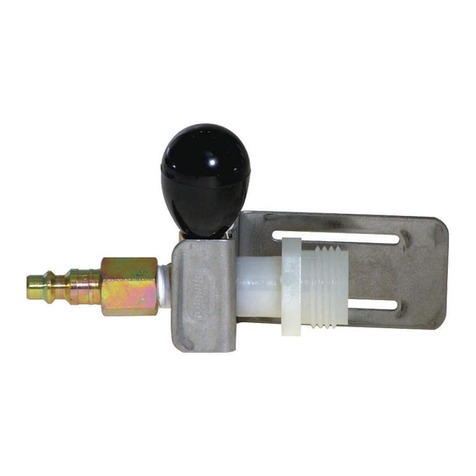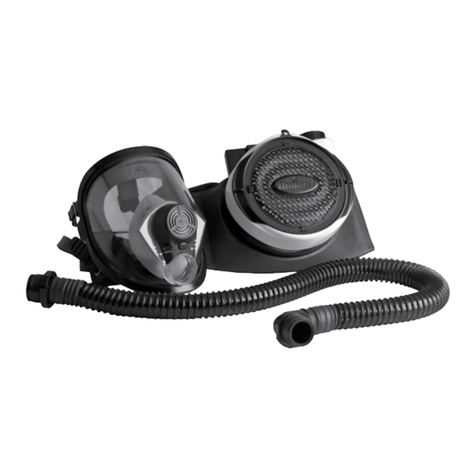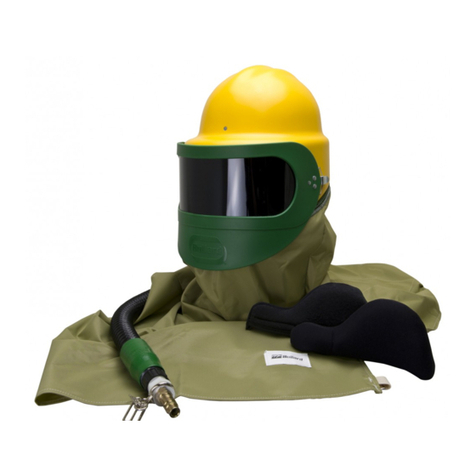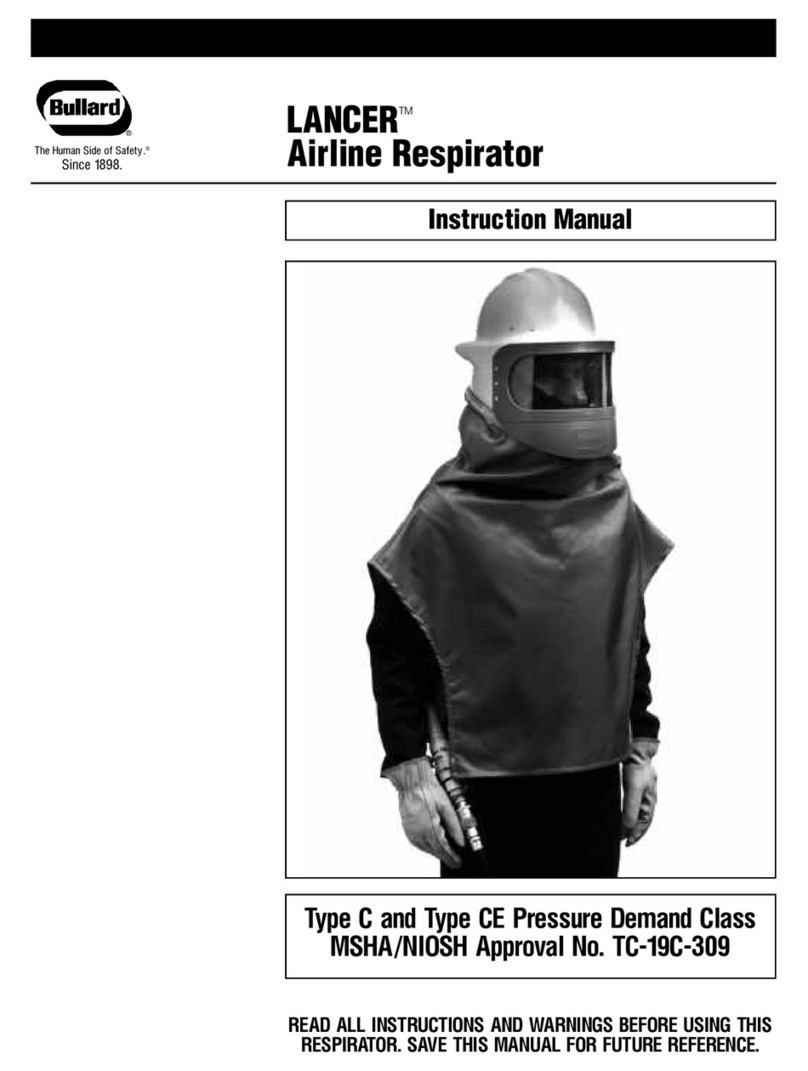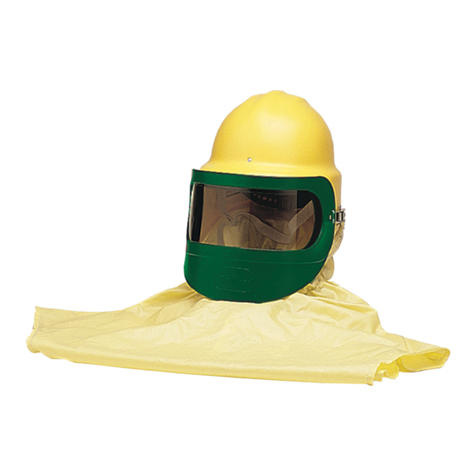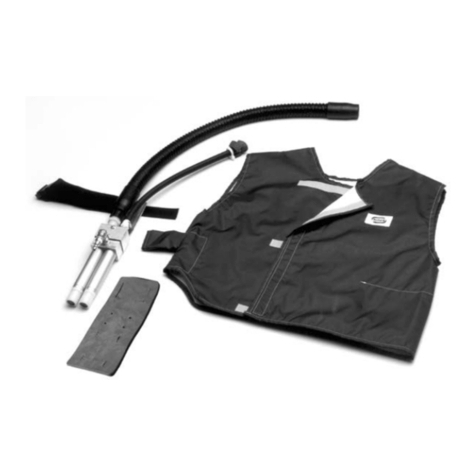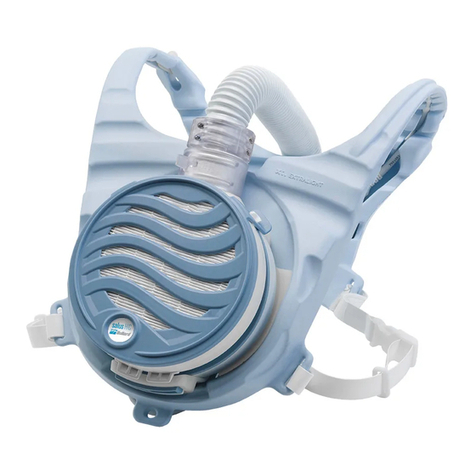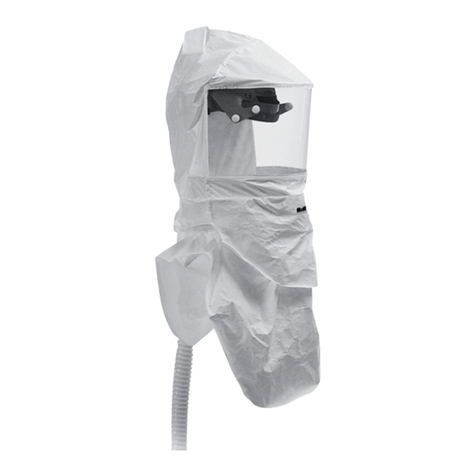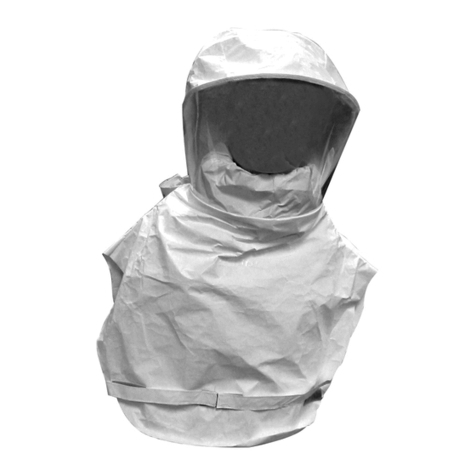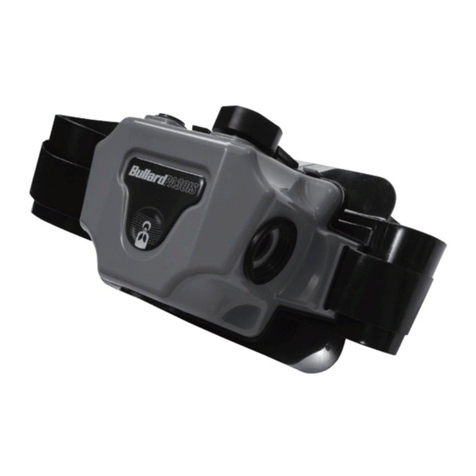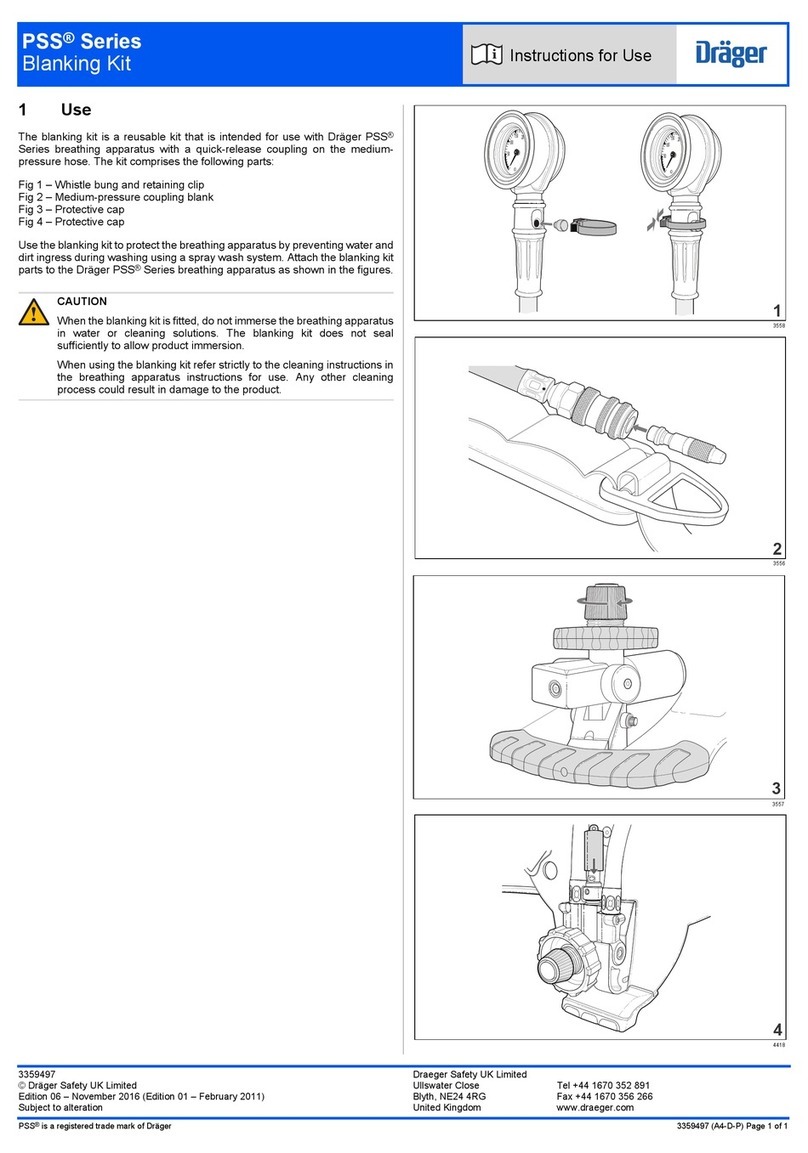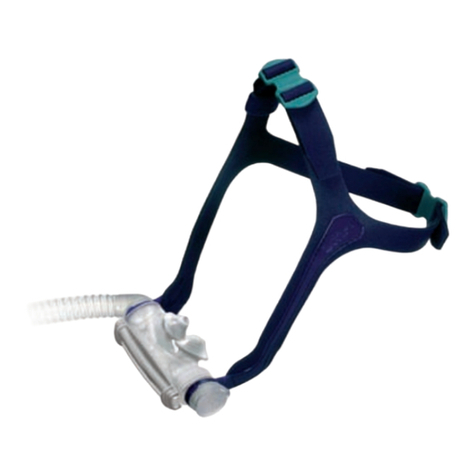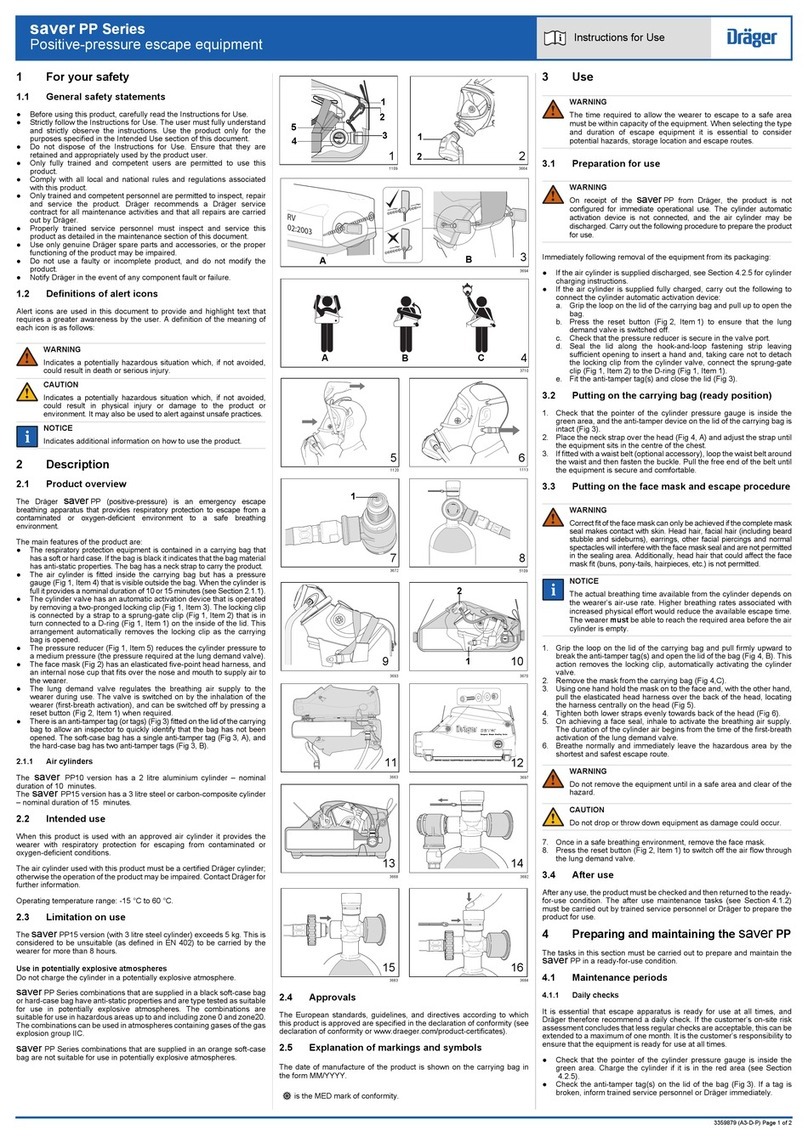Air Pressure
Breathing air pressure must be continually monitored at the point-
of-attachment while operating the respirator. A reliable air
pressure gauge must be present to monitor the pressure during
respirator operation.
Make certain that your breathing air compressor has
sufficient capacity to deliver a minimum of 30 cfm per
respirator wearer at all times. Because Dual-Cool has
two cool tubes, it requires a higher than normal volume
of air.
The Breathing Air Pressure Table on the next page defines the air
pressure ranges necessary to provide the PC90 Series respirators
with a volume of air that falls within the required range of 6-15
cubic feet per minute (cfm) or 170-425 liters per minute (lpm). (See
42 CFR, Part 84, Subpart J, 84.150). To use the table, follow the
steps identified below:
1. Confirm the air source, respirator model, breathing tube, and
Dual-Cool tube assembly (Columns 1-4).
2. Confirm your choice of NIOSH approved Bullard air supply
hose(s) (Column 5).
3. Determine that your air supply hose does not exceed the
maximum approved hose length (Column 6) or number of hose
sections (Column 7).
4. Set the air pressure at the point-of-attachment within the
required pressure range (Column 8) for your air supply hose
length.
WARNING
Failure to supply the minimum required pressure at the point-of-
attachment for your hose length and type will reduce airflow
and could result in death or serious injury.
Air Supply Hose
To maintain your Bullard respirator’s NIOSH approval, use only
approved Bullard V10 Series hose(s) in lengths of 50 to 300 feet,
or Bullard V5 Series hose in lengths of 25 to 50 feet. Bullard V11
hose-to-hose adapters MUST be used to connect V10 hose lengths
together. Secure connection(s) until wrench tight and leak free.
NOTE
Do not use a quick-disconnect fitting to connect a V10
hose to the air source.This would restrict airflow and
is not approved in this configuration.
WARNING
Use of any other air supply hose voids NIOSH approval of the
entire respirator assembly and might reduce the airflow to the
respirator, which could result in death or serious injury to the
respirator wearer.
WARNING
The DC60 Dual-Cool climate control system is not recommended
for cooling the air supply when the air temperature is less than
70°F. Because the DC60 Dual-Cool may cool the incoming air by
more than 30°F, it is possible for ice to form in the breathing
tube and reduce the airflow. Failure to observe these warnings
could result in death or serious injury.
Compressed air must be dry enough to prevent ice buildup in the cold
airstream. Ice could reduce airflow into the respirator hood.
Replacement Parts
CATALOG
NUMBER DESCRIPTION
DC65ML Medium/Large Cooling Vest
DC65XLXXL X-Large/XX-Large Cooling Vest
CH60 DC50 Series Dual-Cool Connector Hose
4612 Nylon Belt
Breathing Air Pressure Table
This table defines the air pressure ranges necessary to provide the PC90 respirator with a volume of Grade D breathable air that falls within the U.S. Government
required range of 6-15 cfm (or 170-425 lpm). See 42 CFR, Part 84, Subpart J, 84.150.
(1) (2) (3) (4) (5) (6) (7) (8)
Maximum Air Maximum Required
Supply Hose Number Pressure
Breathing Dual-Cool Air Supply Length of Hose Range
Air Source Respirator Tube Tube Assembly Hose (feet) Sections (psig air)
Stationary PC90 90BT DC6040 1/4" Ind. Int., steel 50 2 48-52
or portable DC604B 1/4" Ind. Int., brass 100 3 59-63
compressor 90BTF DC6040S 1/4" Ind. Int., stainless V10 150 3 68-72
supplying DC6041 1/4" Schrader 200 3 80-84
Grade D 90ELF DC6042 1/4" Snap-Tite, steel 250 3 85-92
breathing DC6043 1/4" Snap-Tite, brass 300 5 90-98
air DC6044 1/4" Snap-Tite, stainless V5 25 1 53-57
DC6047 1/4" Cejn, steel 50 2 67-71
